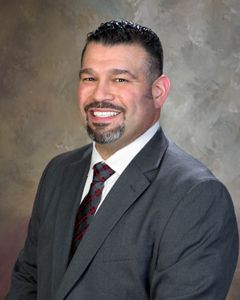Cuts or not, area school taxes still rise
First Posted:
By Mark Guydish [email protected] Reporter
Initial results of a new age of public school austerity are in: Four local districts cut preliminary budgets but still expect to spend more than last year; seven produced plans that spend less than last year. Yet despite all the slashing of expenses, nine districts raised taxes.
And if you think next year will be easier, think again.
After years of steady increases in state funding under former Gov. Ed Rendell, Luzerne County’s 11 school districts found themselves coping with Gov. Tom Corbett’s decision to slash about $1 billion from the state’s funding of public school education. Debates were sharp and votes often narrowly divided as local school boards approved final budgets that cut employees, programs or both in response to decreased state support.
A Times Leader review of budgets and tax rates in those final budgets shows that:
• Collectively, county districts expect to spend $10 million less than last year, a 3.3 percent decrease. The biggest cut, by percentage, was 4.6 percent in Hanover Area. The biggest cut dollar-wise was $3.7 million in Hazleton Area.
• On average, property taxes rose by 3.1 percent, though that includes the two districts that kept taxes flat – Greater Nanticoke Area and Northwest Area. The biggest percentage increase, 7.6 percent, was in Crestwood – though it’s worth noting that district had the lowest tax rate in the county.
• Four districts increased spending and taxes. Two cut spending and left taxes the same. Five districts cut spending and still increased taxes. Among those, Wyoming Valley West had the largest disparity, cutting spending by 3.3 percent, yet increasing taxes by 6.3 percent. Put another way, WVW expects to spend $2.1 million less, yet asked property owners to pay about $60,000 more total.
WVW Superintendent Charles Suppon said the main reasons for the tax hike — despite the steep spending cuts — were to cover expansion of one school and to head off bigger cuts in 2012. He said he would not be surprised if the district has to look for another $1 million in savings next year.
“The one thing that’s out there that has everyone on pins and needles is the bill that does away with exceptions to Act 1,” Suppon said, referring to what had been known as Senate Bill 330, signed into law by the governor June 30.
That bill strips away many exceptions to a tax referendum mandate in Act 1, a law that requires districts to get voter approval for tax increases that exceed a state-set index. Act 1 allowed numerous exceptions, and districts routinely sought and received them, bypassing the need for a referendum.
SB 330 eliminated most of the exceptions and put restrictions on the ones that remain: increases to cover spikes in special education costs, pension costs, or to pay off construction debt.
The special education limits “are major concern,” Suppon said, noting most special education costs are incurred because of state and federal mandates. “That’s been an escalating cost for us.”
Dallas School District Business Manager Grant Palfey noted that under the new rules, whether a district can get approval for a referendum exception for pension payments depends partly on salaries paid to teachers today. This makes little sense, he said, because pension obligations can change substantially as contracts are renegotiated and employees retire and are replaced in future years. It also makes little sense because the amount districts pay into the pension fund is set by a state agency.
“We can’t control the pension rate,” Palfey said,
Dallas increased spending this year by 1.6 percent while increasing taxes by 5 percent, but about 3 percent of that tax hike was planned years ago when the school board first decided to build a new high school, set to open this fall. To pay the roughly $40 million cost, 3 percent increases were planned through 2011-12.
Palfey said the district should be able to keep any tax increase next year within the state limit, but added that the district is already looking at which teachers are likely to retire and how many of those positions could be left unfilled to avoid shortfalls in future budgets. And he believes similar planning will be needed for a long time.
“I anticipate it will be a challenge for the next 10 years,” Palfey said. “I don’t see how it’s going to stop.”











